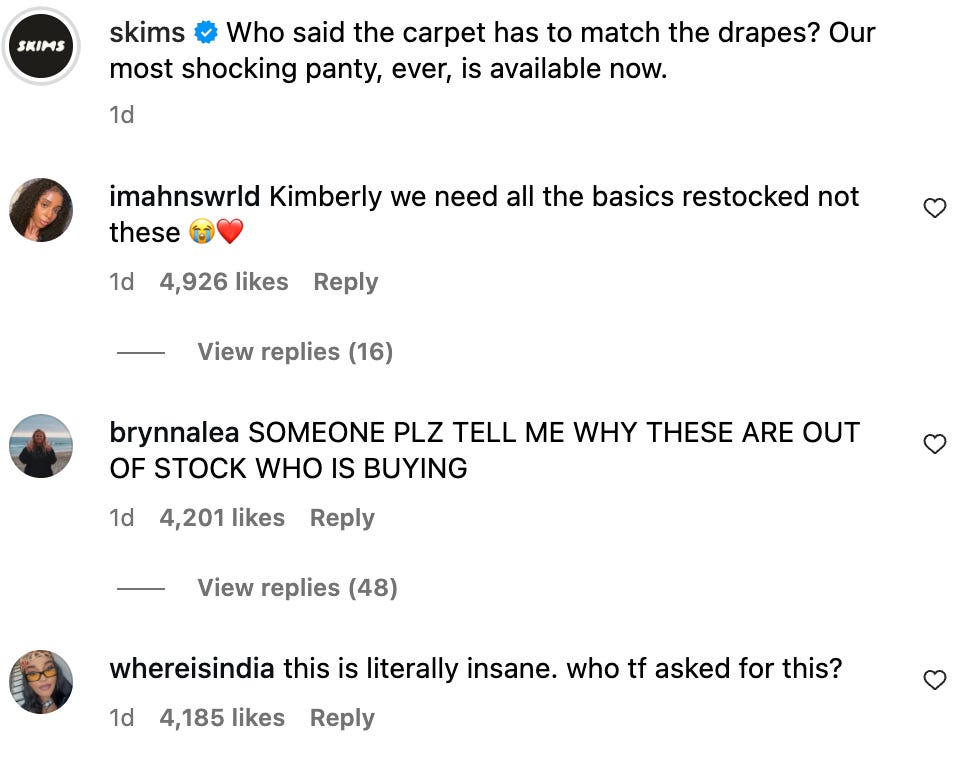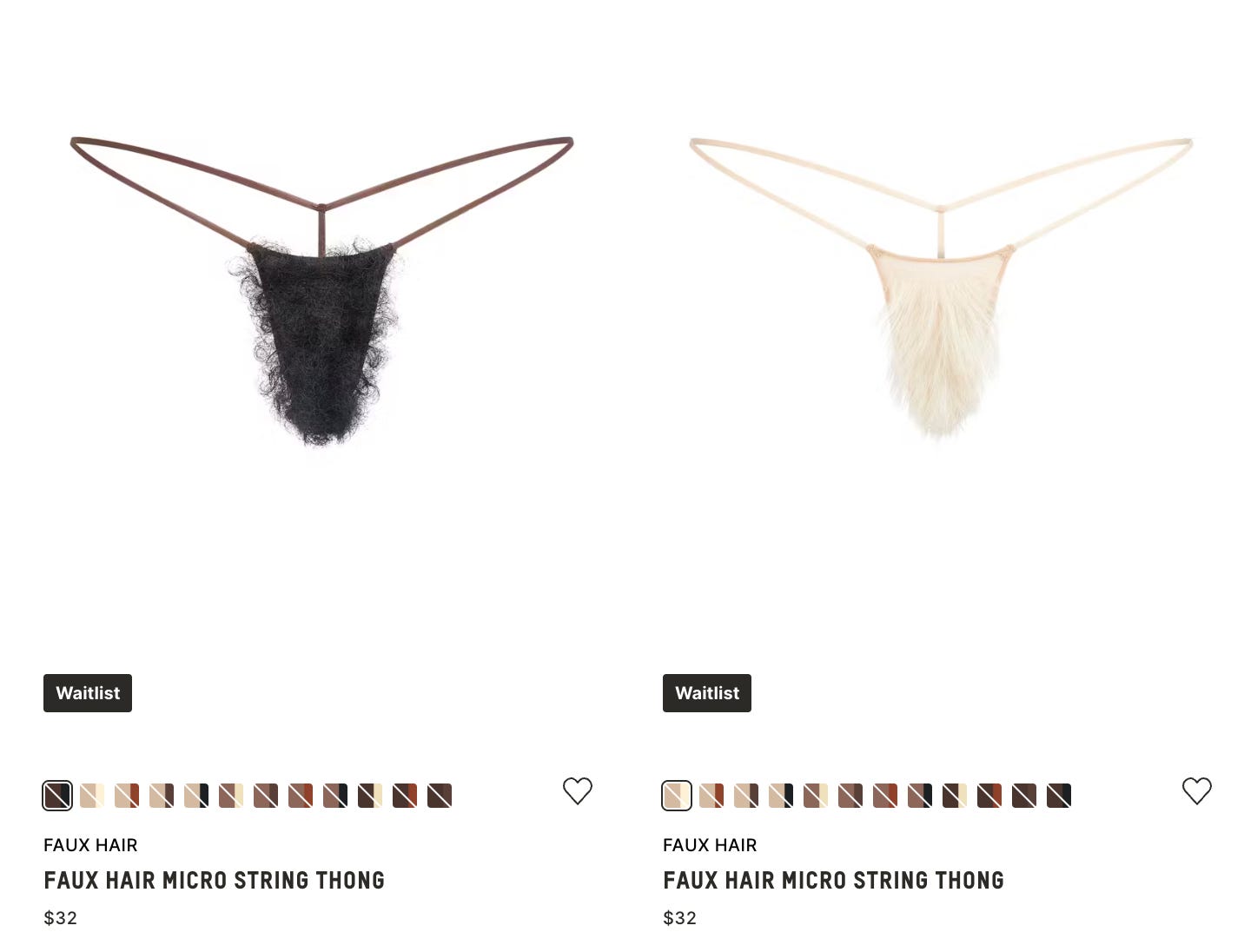When Women Can’t Enter the Archive, They Build Their Own
Kim Kardashian, wearable faux fur, and how feminine power looks when the old system won’t let you in.
When I first saw Kim’s new launch, my mind went straight to who in their right mind would wear that? And what kind of marketing gimmick is this?
I leaned into curiosity and did a little research. In a sea of similar (and hilarious) reactions echoing my own, one unexpected theme surfaced: female empowerment. It felt like a stretch to go from faux full bush to feminist statement. Yet, the conversation made me pause. Watching the creative director musical chairs at Paris Fashion Week drove the point home. We desperately need more of that — female empowerment, women at the top, and (much) more women included in what we still call women’s wear. I wrote about that whirlwind of new appointments and what it means for fashion’s next chapter here.
For context, recently, fifteen creative directors rotated between major Paris houses. Only two were women: Louise Trotter stepped in at Bottega Veneta following Matthieu Blazy’s move to Chanel. Rachel Scott took over at Proenza Schouler, and if we are generous, we can count one more: Maria Grazia Chiuri, newly named Chief Creative Officer at Fendi, returning to the house where she began her career back in 1989.
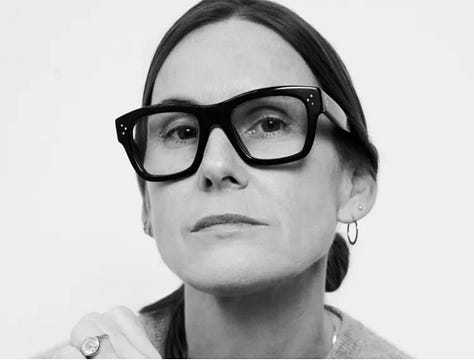
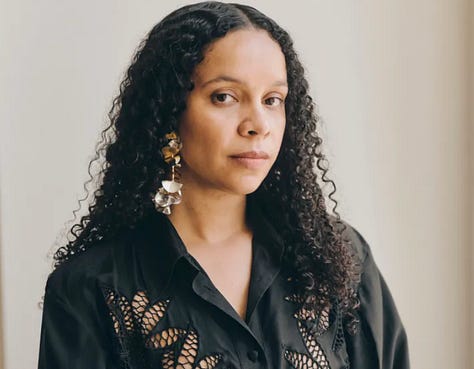
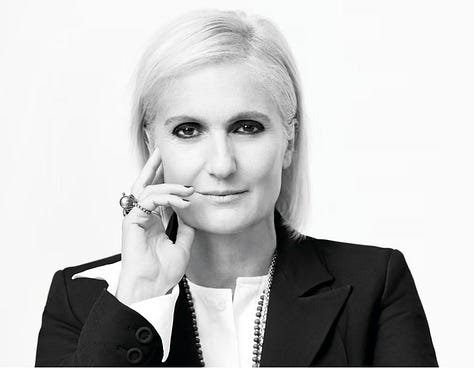
That makes three. Three women shaping the most visible stage in fashion - an industry inspired by women, made for women, yet still largely designed and managed by men.
Yes, high fashion was born in male-led ateliers of the early twentieth century. Still, after nearly a century of supposed progress since women entered the workforce, the balance hasn’t shifted much. This legacy of male‑run heritage brands remains a barrier today - whether it’s tradition, politics, or the myth of the male genius designer, the numbers speak for themselves.
Who said the carpet has to match the drapes?
This isn’t the first time Kim K has broken the internet - and probably won’t be the last. Asking whether this is a branding spectacle or who would buy it misses the point. The real question is where and when it lands. Hair has become a prominent theme in fashion — less old‑money fur, more primal and intentionally raw. Many of the designers shaping this trend are women, but Kim’s version naturally draws more controversy. She’s made a career of turning the “taboo” into commerce.
If you take a closer look, Kim’s launch hits a nerve because it exposes (literally and figuratively) what fashion has long tried to smooth away. The product may be absurd, yet the gesture — reclaiming what’s been censored — is not. After decades of being told to wax, edit, and filter, it becomes a power play: a woman choosing for herself what kind of “visibility” she will offer.
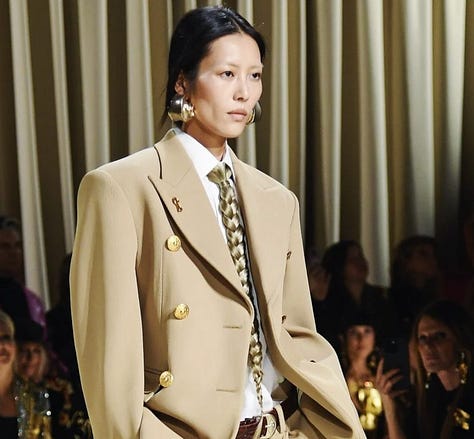
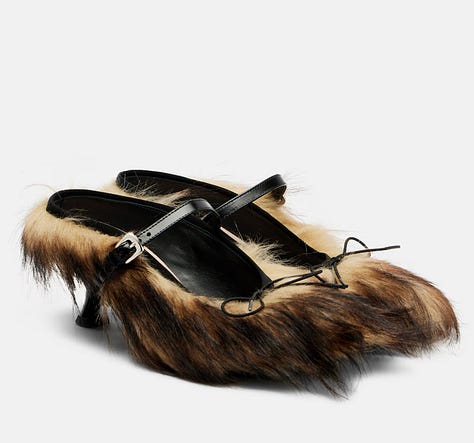
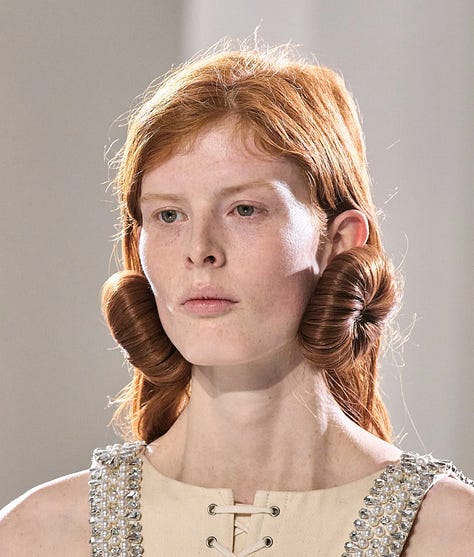
Surprisingly, it is not new. The idea of a merkin - a pubic wig - dates back to the 15th century, when women wore them to cover signs of disease or to maintain modesty after shaving for hygiene. Centuries later, they appeared in theater and film to skirt censorship laws that forbade visible nudity. What began as concealment eventually moved on stage, and now apparently is flying off the virtual shelves — the hairy micro-thongs are sold out (!!)
We might give this launch the benefit of the doubt, though the harsher view is that it’s simply a marketing stunt - designed for profit rather than progress. When it lacks substance, social context, or deeper intent, it becomes just another product sold to change the female body - this time by “adding” something women already have.
Institutional visibility = power?
Fashion is all about being seen — who gets noticed, wearing what, and by whom. Still, the people in charge of that visibility haven’t changed much: men continue to lead most major luxury houses. Is that out of respect for tradition, or just another way of keeping women out?
Before we discuss social media influence, it’s worth asking what kind of visibility matters more: the prestige of the runway or the reach of the feed, which rewrites culture in real time.
Nowadays, visibility is not about being recognized by fashion institutions; it is about reach, influence, and control over the narrative. Skims has nearly seven million followers on Instagram — about the same as Loewe, one of the oldest and most influential heritage brands in the world. That parity says everything. A reality star’s shapewear line and a 178-year-old Spanish fashion house now have equal global attention. It is debatable who has a stronger fan following, and following is the new currency and ultimate power.
Kim’s empire might not carry the artistic gravitas of Chanel or Dior, yet it represents a new order of influence: one that does not ask for inclusion because it no longer needs the invitation.
The Measure of Success
As we established, only two of the fifteen creative directors in Paris are women. Maybe that imbalance explains the broader hair trend, and why the most provocative gesture about female power this season did not come from a runway — it came from Kim Kardashian.
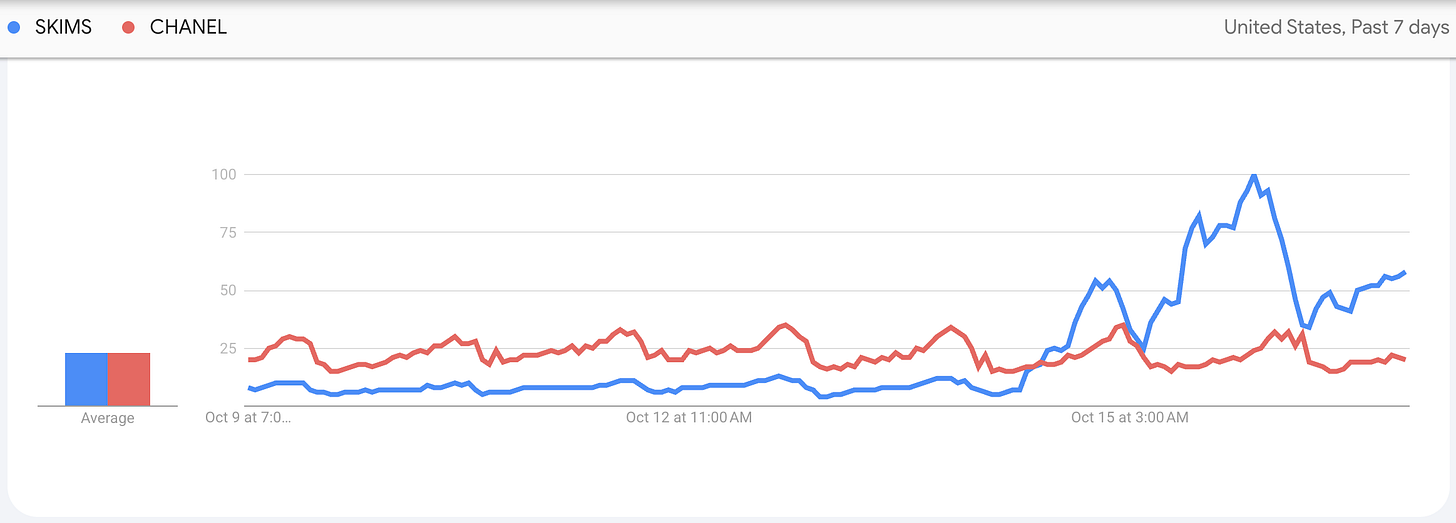
Skims currently surpasses Chanel in global search interest - proof that Kim’s empire has won in reach and visibility. Still, it highlights a tension in fashion today: you can win outside the heritage system, but the prize might look different.
— Would you rather be remembered for creating an heirloom-worthy Chanel bag, or for the faux-fur bush that broke the internet?




